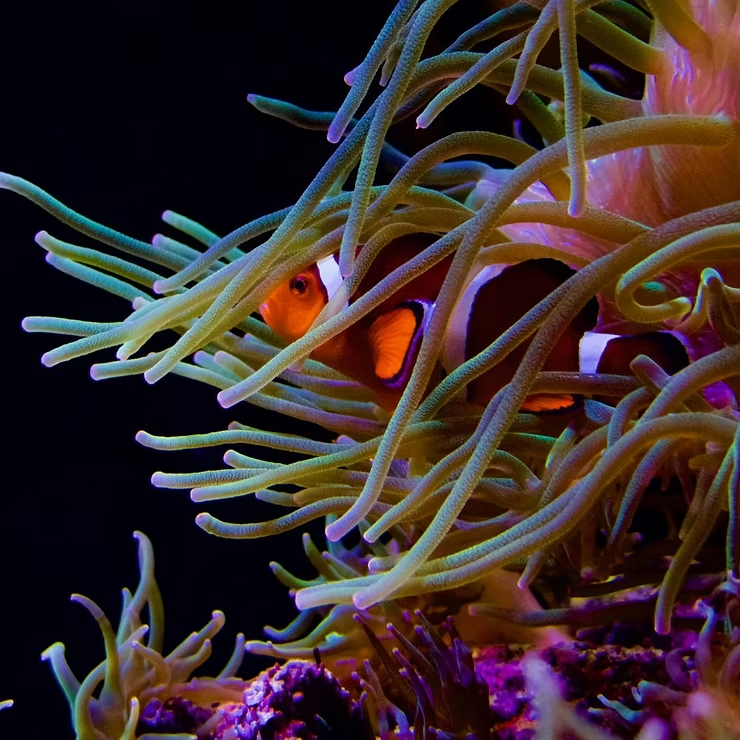Symbiotic Seas: The Hidden Partnerships of Marine Life
In the vast ocean, survival is not just about competition but collaboration. Marine symbiosis showcases how unexpected partnerships—from sea otters to corals—help sustain ecosystems, restore balance, and adapt to environmental change. These intricate relationships highlight the resilience of nature and offer inspiration for human-led conservation efforts.
Sea Otters: Apex Predators as Ecosystem Engineers
The Ripple Effect of Predation
Sea otters demonstrate how a single predator can transform entire habitats. By controlling crab populations, they reduce erosion and enhance seagrass growth, which supports biodiversity and carbon storage.
- Otters slow erosion in salt marshes
- Seagrass thrives with fewer crabs
- Entire food webs benefit from balance
Artificial Habitats: Building Beneath the Waves
Mimicking Nature with Artificial Algae
Engineered habitats such as artificial algae structures provide shelter for marine life and mitigate habitat loss. While promising, their long-term success depends on monitoring and adaptation to challenges like ocean acidification.
- Offer safe havens for crustaceans and mollusks
- Resilient under acidification, though calcifying species struggle
- Require integration with broader conservation strategies
Urchin Aquaculture: Balancing Diet and Conservation
Kelp Forests at Risk
Overgrazing by urchins threatens kelp forests, vital ecosystems for biodiversity and carbon sequestration. Farming urchins provides both a sustainable seafood source and a method to protect kelp ecosystems.
- Responsible aquaculture reduces wild urchin pressure
- Supports kelp forest recovery
- Aligns human consumption with ecological health
Sea Stars: Keystone Species Under Stress
Heatwave Havoc
Marine heatwaves disrupt sea stars, essential predators in intertidal zones. Rising temperatures hinder reproduction, increase disease, and threaten their survival, with cascading effects on marine ecosystems.
Beavers: Urban Allies in Restoration
From Pests to Partners
On land, beavers transform cityscapes into healthier habitats. Their dams create wetlands that filter pollutants, reduce flooding, and support wildlife diversity.
- Wetlands act as natural water purifiers
- Carbon storage in wetlands mitigates climate change
- Boosts biodiversity in urban environments
Shellfish and Climate Change: Estuaries Under Pressure
Multi-Stressor Challenges
Estuaries, home to shellfish, face combined threats from warming, acidification, and pollution. These pressures weaken shellfish populations that are vital to both ecosystems and human economies.
Adapting Through Aquaculture
Innovative breeding programs and monitoring technologies aim to enhance resilience, ensuring shellfish aquaculture can adapt to a changing climate.
Mutualism Beneath the Surface
Coral Reefs and Zooxanthellae
Corals and algae exemplify symbiosis: algae provide nutrients via photosynthesis while corals offer shelter. Climate change threatens this bond, causing bleaching and loss of reef biodiversity.
Predators as Protectors
Redefining Ecosystem Management
Apex predators such as otters and wolves reveal how their presence can stabilize ecosystems. Their reintroduction must be carefully managed, but their role as protectors of biodiversity is undeniable.
Conclusion: Embracing Nature’s Partnerships
From the sea otters’ crab-crunching influence to corals’ colorful collaborations, marine symbiosis reminds us that survival depends on balance. By respecting and protecting these natural alliances, humanity can support thriving oceans and resilient ecosystems.
Frequently Asked Questions
How do sea otters restore ecosystems?
By reducing crab populations, otters prevent erosion and support seagrass and salt marsh health.
Are artificial habitats effective?
Yes, they support biodiversity, but success varies under challenges like acidification and nutrient pollution.
Why are sea stars important?
As keystone predators, sea stars regulate prey and maintain balance in intertidal ecosystems.
Can eating urchins help kelp forests?
Responsible aquaculture reduces wild urchin pressure, aiding kelp recovery while providing sustainable seafood.

